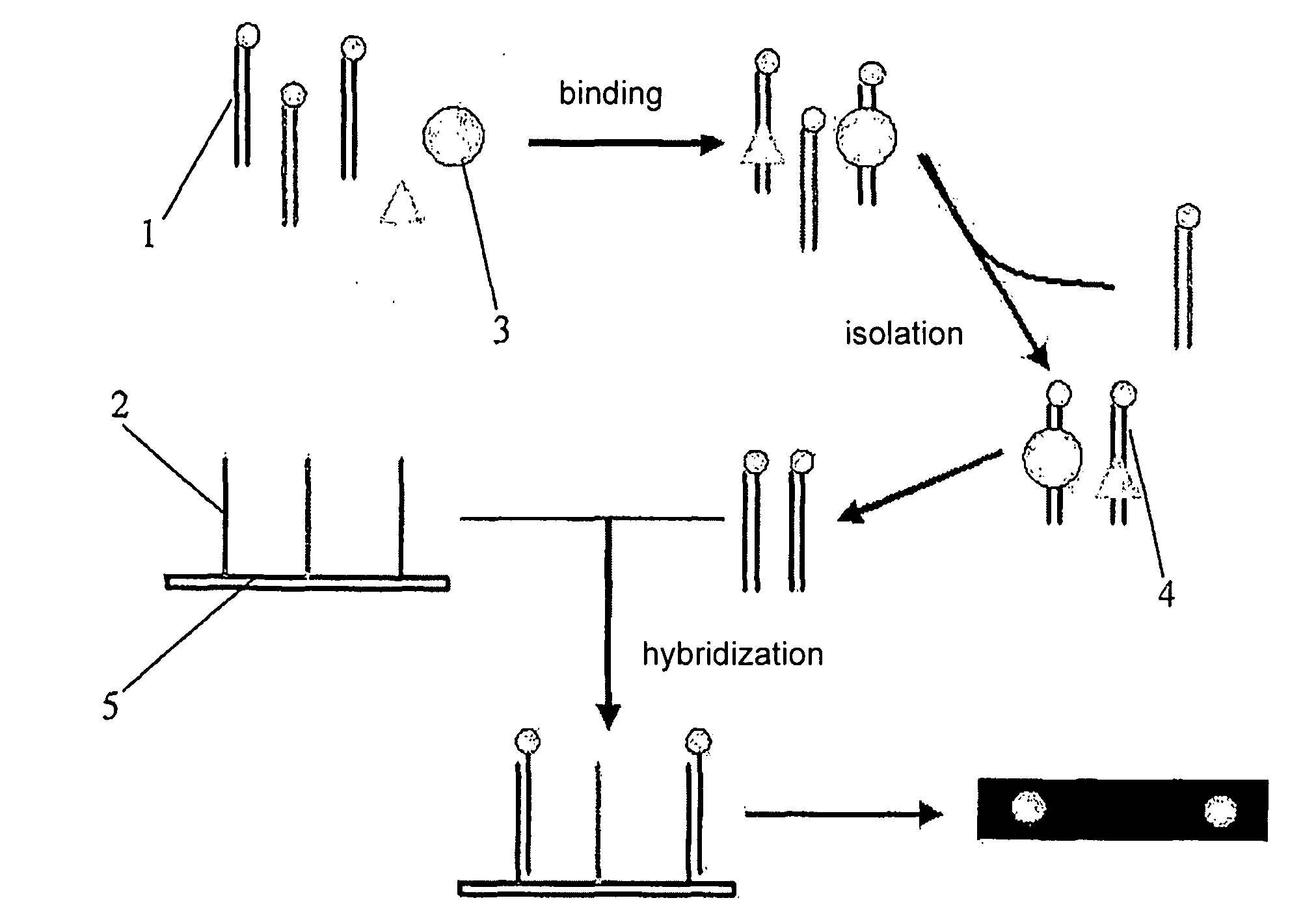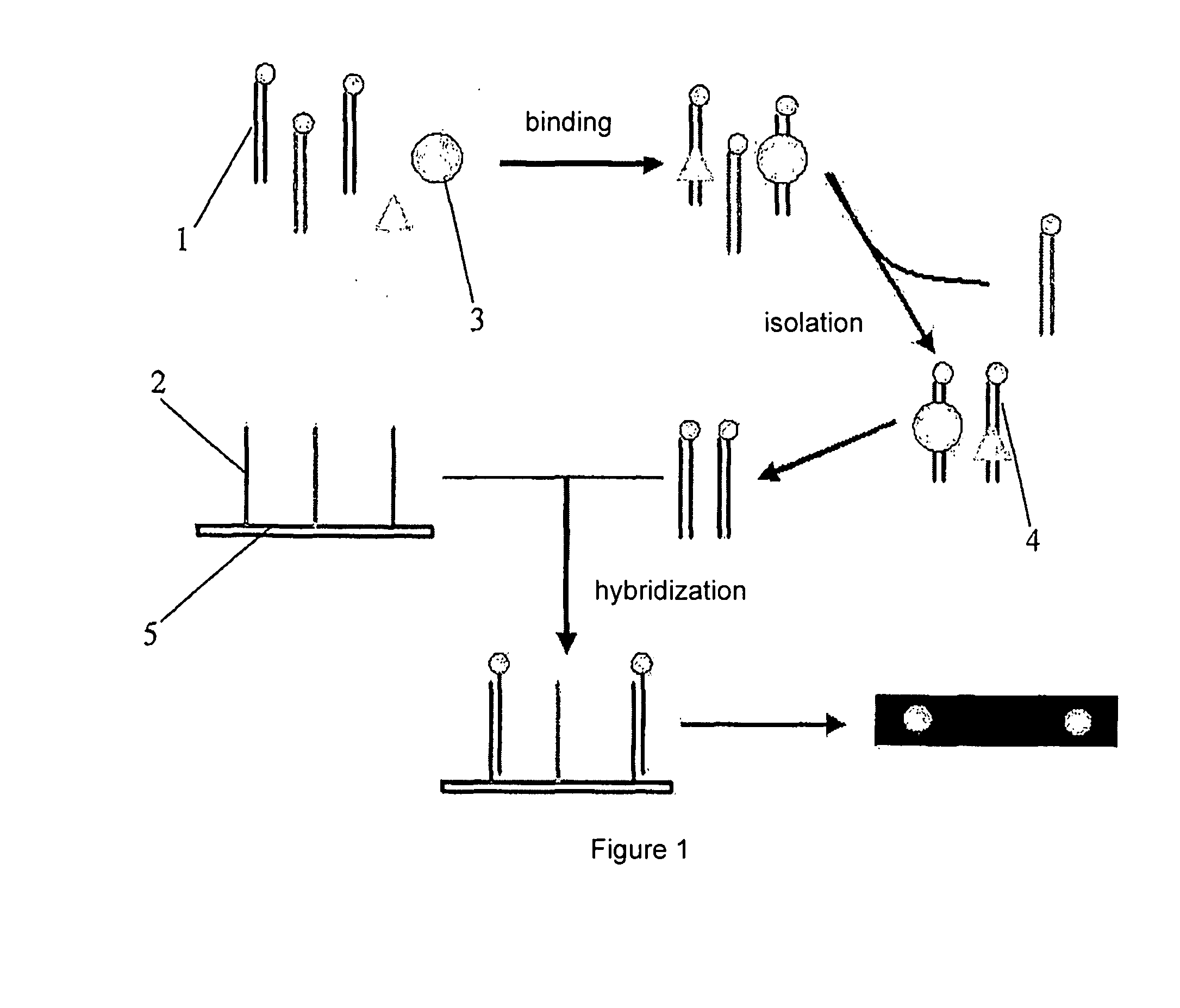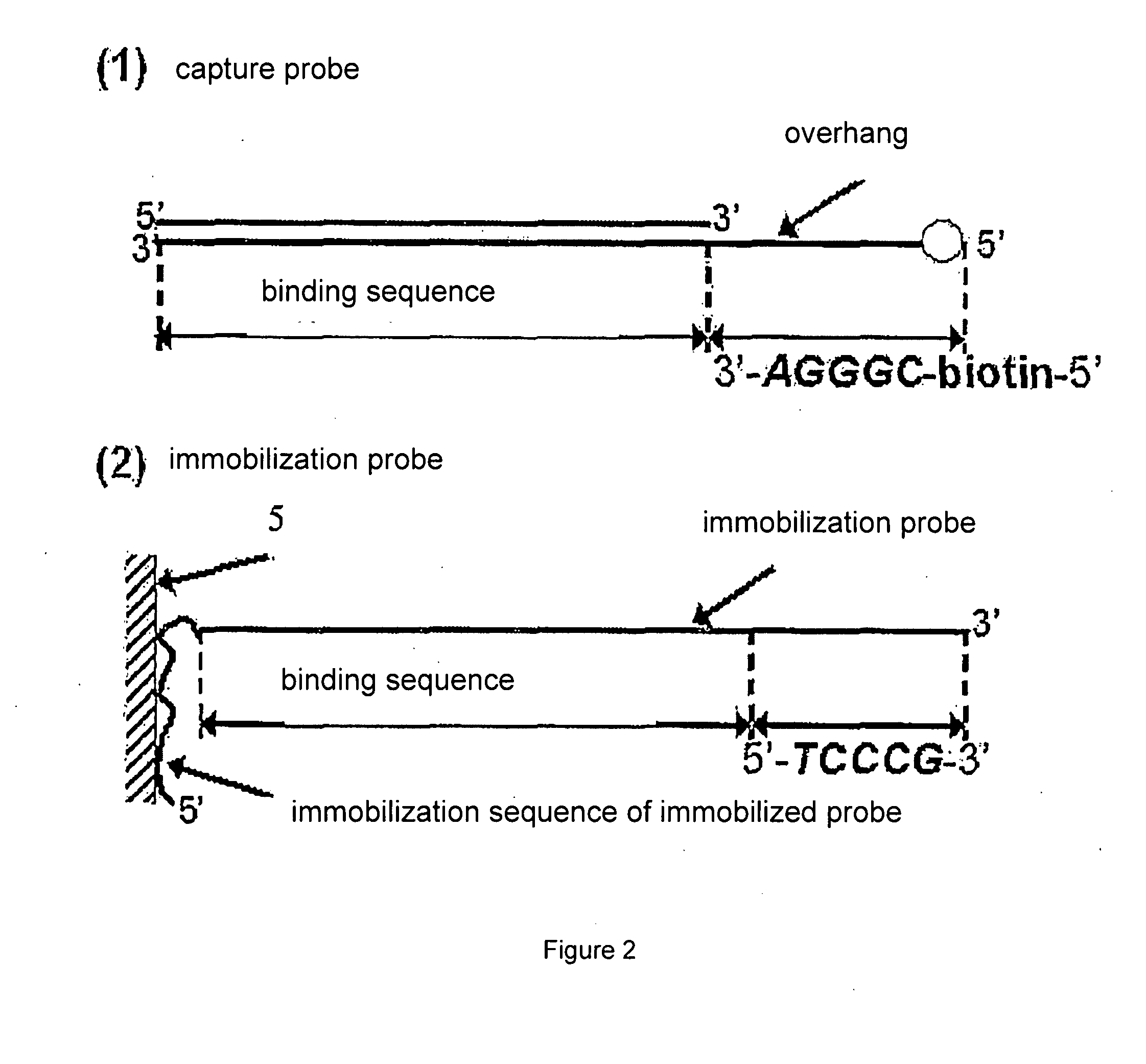Testing Method of Nucleic Acid Binding Protein Based on Biochip
a nucleic acid binding and biochip technology, applied in the field of biochip-based methods for detecting nucleic acid binding proteins, can solve the problems of labor-consuming, more complicated organisms with more transcription factors, and complicated gene expression regulation mechanisms,
- Summary
- Abstract
- Description
- Claims
- Application Information
AI Technical Summary
Benefits of technology
Problems solved by technology
Method used
Image
Examples
example 1
Using DNA biochip to simultaneously detect three nucleic acid binding proteins AP1, NFkB and Sp1 (end labeling method)
[0037]As shown in FIG. 1, the end labeled capture probes 1 were mixed with target proteins 3 (represented by the circle and the triangle in the Figure). The nucleic acid capture probe-nucleic acid binding protein complexes 4 formed were then isolated and the capture probes in the complexes were collected. The collected capture probes were hybridized with immobilization probes 2 immobilized on a biochip 5, and the hybridization signal was detected to obtain the result.
[0038]FIG. 2 shows a preferred design for capture probes and immobilized probes. The double stranded capture probe contains a sequence that a target nucleic acid binding protein binds. One strand in the capture probe contains an overhang which is labeled with a labeling molecule, a biotin in the Figure. The immobilization probe is complementary to the longer strand of the capture probe.
[0039]Materials:
[0...
example 2
Using DNA Biochip to Simultaneously Detect Three Nucleic Acid Binding Proteins AP1, NFkB and Sp1 (Single Strand Amplification)
[0048]FIG. 4 shows an operation diagram of detection using single strand amplification method. Capture probes 1 were mixed with target protein 3 (represented by the circle and the triangle in the Figure). The capture probe-nucleic acid binding protein complexes 4 formed were isolated and the capture probes were collected. Primer 6 was used to amplify the capture probes collected, and the amplified product was hybridized with immobilization probes 2 immobilized on biochip 5. The hybridization signal was detected to obtain the result.
[0049]FIG. 5 shows a preferred design for capture probes, immobilization probes and primers. The double stranded capture probe contains a sequence that a nucleic acid binding protein binds, and one strand contains a 3′ overhang. The primer sequence is complementary to the 3′ overhand. The sequence of the immobilization probe is con...
PUM
| Property | Measurement | Unit |
|---|---|---|
| center-to-center distance | aaaaa | aaaaa |
| temperature | aaaaa | aaaaa |
| temperature | aaaaa | aaaaa |
Abstract
Description
Claims
Application Information
 Login to View More
Login to View More - R&D
- Intellectual Property
- Life Sciences
- Materials
- Tech Scout
- Unparalleled Data Quality
- Higher Quality Content
- 60% Fewer Hallucinations
Browse by: Latest US Patents, China's latest patents, Technical Efficacy Thesaurus, Application Domain, Technology Topic, Popular Technical Reports.
© 2025 PatSnap. All rights reserved.Legal|Privacy policy|Modern Slavery Act Transparency Statement|Sitemap|About US| Contact US: help@patsnap.com



